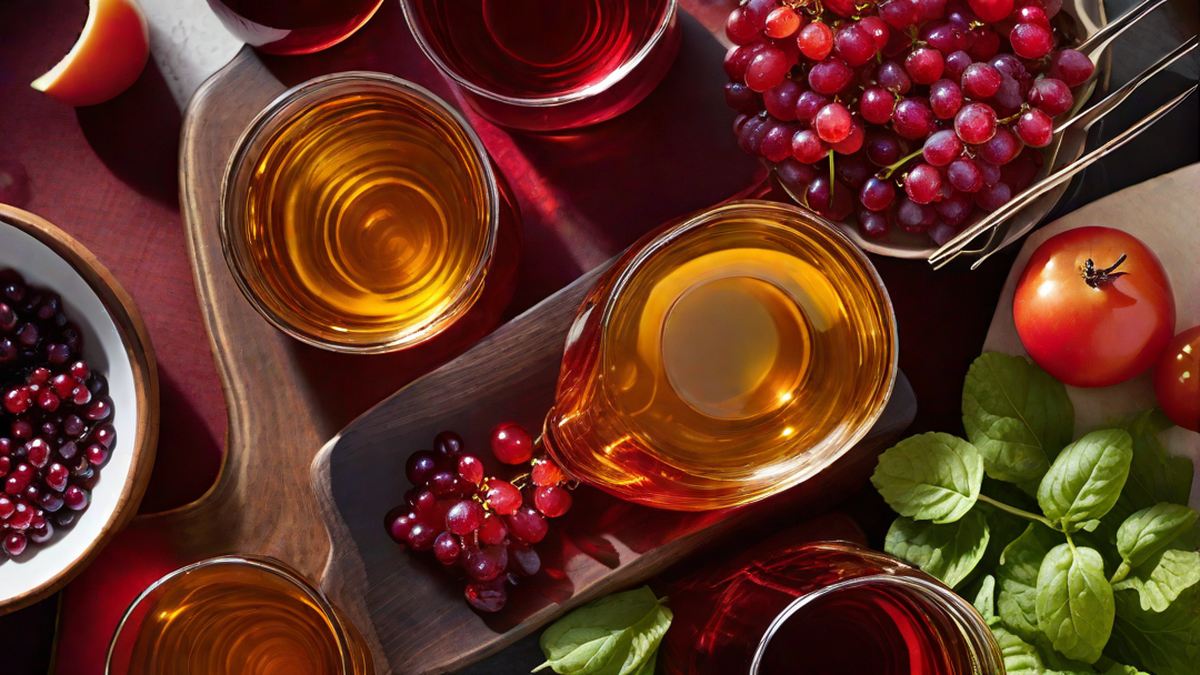Red wine vinegar is a crucial component in my pantry. Not only does it provide a tangy and intricate taste to my dishes, but it also provides numerous health advantages. In this article, I will guide you through the diverse methods of incorporating red wine vinegar into your cooking, as well as share my personal recommendations and techniques.
1. Salad Dressings and Marinades
One of the most common uses for red wine vinegar is as a base for salad dressings and marinades. Its sharp acidity and fruity undertones elevate the flavors of vegetables and meats. To create a simple vinaigrette, whisk together red wine vinegar, olive oil, Dijon mustard, garlic, salt, and pepper. Toss it with your favorite salad greens or drizzle it over roasted vegetables for a burst of flavor.
When it comes to marinades, red wine vinegar acts as a tenderizer, helping to break down the proteins in meat and infuse it with flavor. Combine red wine vinegar with herbs, spices, and olive oil, then marinate your meat of choice for at least 30 minutes before cooking.
2. Sauces and Reductions
Red wine vinegar is a fantastic ingredient to use in sauces and reductions. Its acidity helps balance rich flavors and adds depth to dishes. For a quick and flavorful sauce, deglaze your pan with a splash of red wine vinegar after sautéing meat or vegetables. This will help to lift any browned bits from the bottom of the pan and create a tasty sauce.
To make a reduction, simmer red wine vinegar with some sugar or honey until it thickens and becomes syrupy. This reduction can be drizzled over grilled meats, roasted vegetables, or even used as a glaze for desserts like strawberries or peaches.
3. Pickling and Preserving
Red wine vinegar is a key ingredient in pickling and preserving. Its acidic nature helps to preserve fruits and vegetables while imparting a tangy flavor. Whether you’re pickling cucumbers, onions, or even watermelon rinds, red wine vinegar will add a delightful zing to your homemade pickles.
To make a simple pickling brine, combine red wine vinegar with water, sugar, salt, and your choice of spices. Bring the brine to a boil, pour it over your prepared vegetables or fruits, and let them sit for a few days to develop flavor.
4. Health Benefits
In addition to its culinary uses, red wine vinegar also boasts several health benefits. It is rich in antioxidants, which help protect our cells from damage caused by free radicals. The acetic acid present in red wine vinegar may also aid digestion and support healthy blood sugar levels.
It is important to note that excessive consumption of red wine vinegar may have negative effects on tooth enamel and digestive health. As with any food or ingredient, moderation is key.
Conclusion
Red wine vinegar is a versatile and flavorful ingredient that can enhance a wide range of dishes. From salad dressings and marinades to sauces and pickles, the possibilities are endless. Its tangy and complex flavor profile, along with its potential health benefits, make it a staple in my kitchen. So next time you reach for that bottle of red wine vinegar, know that you’re adding more than just a splash of acidity to your dish.
